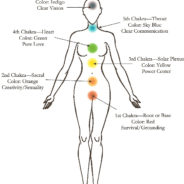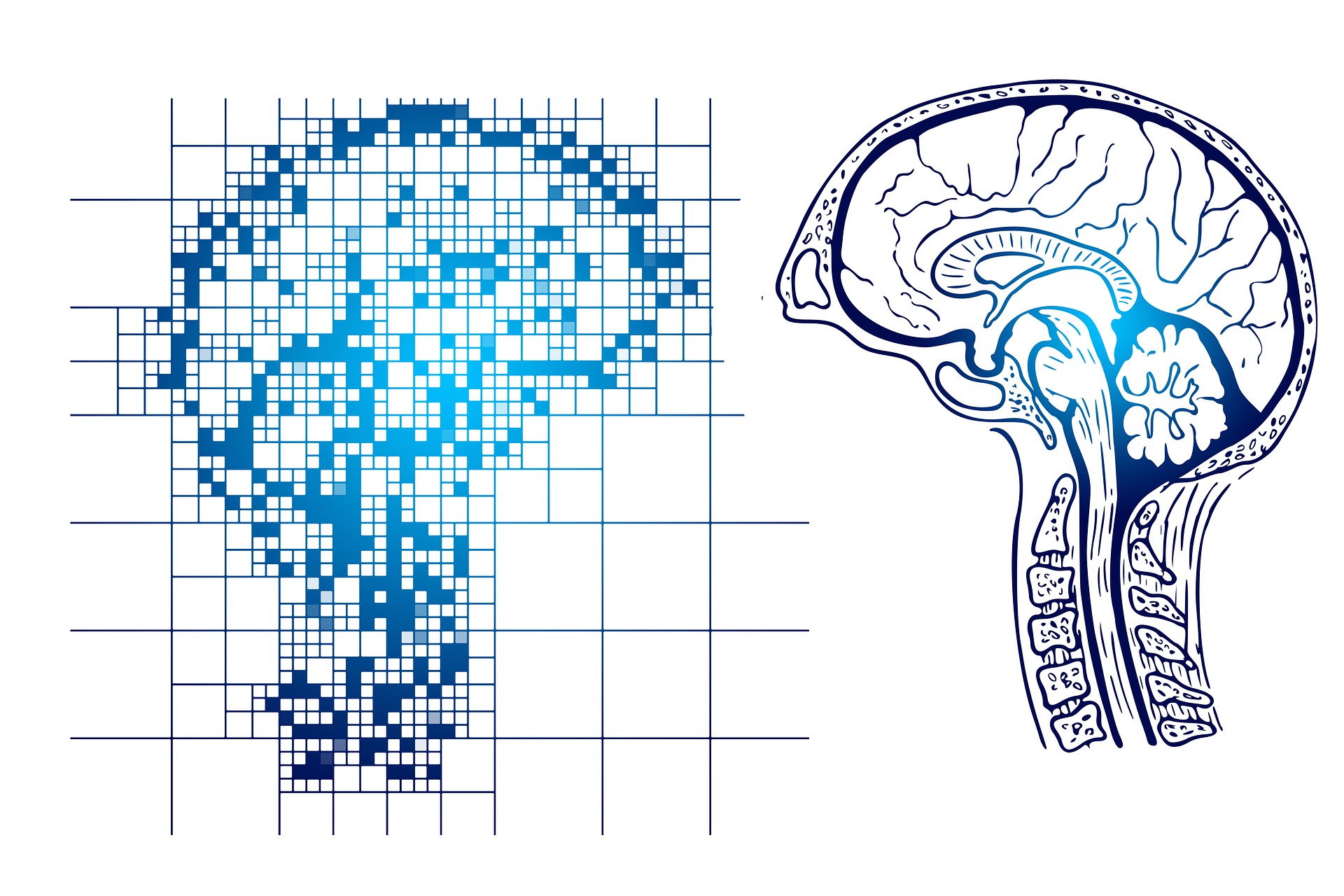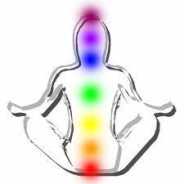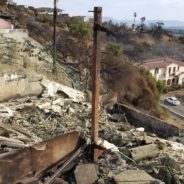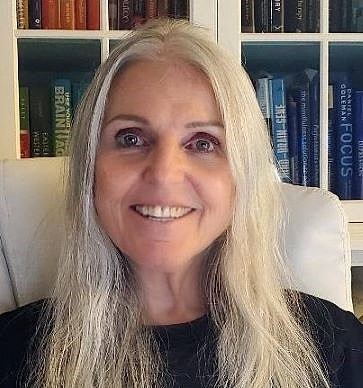Sacral and Throat Chakras
The Sacral and Throat Chakras aka Shock-rahs*
Your second chakra, the Sacral and fifth, the Throat (5th) chakra go hand in hand. The throat communicates from your spiritual point of view and the sacral is earth-bound, limited as that is it’s the center of creativity and birth – the birth of new ideas and human beings. Together, 2 and 5 birth a creation or creative idea and the manifestation of it. Together they bring imagination and creative inspiration into being in the physical environment in order to share it with others.
Your sacral and throat shock-rahs work in harmony making partnerships that foster the birthing of ideas (sacral) and bringing them to life (throat).
The 2nd shock-rah is the seat of your creative process through enacting or manifesting the creative outcome. This is feminine energy, the process, as in pregnancy and childbirth, as in making art, as in sexual attraction and intimacy, as in passionate emotions, as in creating something with another person or yourself. Your emotional body resides here and one’s own unique style and preferences in tastes, fashion, and bodily preferences.
One-on-one relationships and self-care, taking care of yourself with care, are essentially one and the same. Taking care of one’s body and emotional needs, keeping them balanced and in check with the importance they require, not more or less, but what they need at this moment under these circumstances is what self-care is actually about. When your sacral chakras is open and functioning well, it guides and aids self-care as well as nurturing relationships with another.
Your throat shock-rah is about self-expression, which is a creation too. It’s here that you also develop trust in yourself. The 5th shock-rah inspires self-expression and creativity, speaking your own truth, self-trust and trustworthiness toward others. Your integrity comes from here. It’s where you talk your talk and walk your walk.
The fifth shock-rah rules your communication style, time, languaging, your own voice, spiritual expression, and self-expression in infinite ways and about anything. Creativity inspires so much.
Additionally, your second chakra influences your reproductive and sexual organs, kidneys, and lower digestion.
Your fifth chakra influences your thyroid, mouth, lips, throat, neck from collar bones up, gums, tongue, ears, voice/larynx, and nose.
* I often use a different spelling for chakras. I prefer shock-rahs, the implication being that by paying attention to them, keeping them moving and active (shock) we will benefit (rah-rah siscumba) They are energy centers after all, electricity gives shocks. 😊
Meditate on Paper to Intuition/Higher-self Workshop
Next Sunday, March 11, develop your connection to your Highest Self or intuition in my popular writing workshop, Meditate on Paper. For people who rather be moving while meditating, this class provides a little of that, but it is for anyone who wants to find their own answers within. 11-3 PM, Sunday, meets this one time.
You’ll try 4 different approaches/techniques of writing, as in journaling style to answers to your personal questions about something happening in your life now or in the past including your health, relationships, career, and nearly anything at all. Anyone can do these writing technique to tune in to their intuition or higher-self. I teach very specific techniques and we’ll do some warm-up writing first to pave the way.
All that you write is private, no sharing is asked for or required. We will only discuss the processes themselves so that you understand them well to enable your use of the ones you like again at home. I find using these techniques after I meditate the usual way to be very enlightening.
These are proven techniques of writing longhand on paper to get to your inner wisdom. It’s true! I have used these methods myself for years. This isn’t hocus pocus, you’ll use both sides of your brain, with an emphasis on the less often tapped right side. Anyone can do them and they are very interesting and helpful.
Please pre-register with the City of Ventura and pay them, saving time on Sunday, funday.
www.cityofventura.net/recreation
or call them during business hours, through Thursday 654-7563
WHAT TO BRING: journal or paper pad with a hard back, pen, your lunch and a drink (there’s a drink machine there) , a cushion for the chair if you like and layers of clothes, there is no heat or AC. NO computers, all writing is long hand.
More info https://kimberlywulfert.com/meditate/meditate-on-paper/
Questions. call me 320-9361
Building Brain Health through Adult Years
Your brain continues developing until age 25. You continue building brain health through your adult years, your entire life. You can do this mindfully with intention and carve your path of choice or you can do it unconsciously and build in obstacles.
Listen to this brief video summarizing seven highlights for building your brain’s health throughout your life including the adult years from the Global Council on Brain Health, who says brain health does not happen by chance alone.
You may have noticed they didn’t mention nutrition and eating healthy, or getting enough sleep, or de-stressing regularly, or physical exercise, together considered to be one’s lifestyle choices. It seems to me here the Council is focused squarely on keeping your brain growing, going, and rejuvenating by stimulating it more or less directly via your natural cognitive and learning systems. That said, they intend to discuss the effects of nutrition, supplements and cognitive stimulating activities in future report.
The lifestyle aspect is crucial in keeping your mind, body and I’d add spirit, fit and healthy. Relationships are an important piece to both brain and lifestyle healthiness. Having a strong emotional bond with a person, people or pet, one where you feel supported, known and cared about, is essential. It’s a matter of quality over quantity. FB and social media “friends” don’t usually count here. Being a loner most of the time isn’t helpful, yet spending some time alone is helpful to overall health and adds to your ability to bounce back from life stressors. Meditation and other contemplative practices benefit maintaining and rebuilding reslilience.
If you’re reading this and older, don’t be discouraged. The Global Council says making changes in your 60’s and 70’s is beneficial to be sure. If your younger, how you develop your brain now through mid-life will matter throughout your lifespan and help determine how healthy your brain functions in the later years.
Staying Sharp is a website that gives you an assessment of your current brain health and a plan to help you work it!
I’d love to hear what you think about this. What questions come to mind? Please leave comments below or connect with me through my website kimberlywulfert.com
Keep your Heart Chakra Balanced, Start this Valentine’s Day
Intentionally keeping your Heart chakra in balance this Valentine’s Day can be the start of a new way of being and a new morning ritual.
The heart chakra is the shock-rah of love and emotions connected to loving others and being in a relationship. Love, compassion, relationships of all kinds, not only intimate and besties, forgiveness, tolerance, and understanding, and non-judgmental acceptance all emanate from a balanced heart chakra.
The heart chakra is in the fourth one and in the center of your energetic body. It is in the middle of the linear vertical energetic chakra core of the seven main chakras. So the heart chakras especially affects all of them because of this placement. A block in the heart chakra will have a very different effect on your mind, body, and spirit than a balanced, energetic center, as will a heart chakra that is open too wide. Balance is the key.
This chakra’s balance and clarity is most important to the energetic flow throughout your entire energetic core because the heart shock-rah functions as the bridge between the upper and lower shock-rahs, the bridge between the physical body(the three lower shock-rahs) and the spiritual body (the three upper shock-rahs).
The heart chakra conveys energy messages across the bridge that flow from the spiritual level of understanding to the body level of understanding, and from your grounded self-to spirit self.
I equate having a balanced heart shock-rah to the open-heartedness concept. In general this implies you have not built a wall or shield within you at the ready to protect your heart at a hair’s trigger. It means you don’t meet new people with preconceived judgment toward others based on your own past experiences or belief systems. It also means you have not walled yourself off from emotional connection with others out of fear of connecting on an emotional level.
Discernment is possible when your heart shock-rah, as I prefer to spell it, is in balance. A clear and balanced heart chakra shows up as a willing heart with an open mind, a compassionate stance, and an inner Knowing about who you can safely add to your life and relate in a healthy way.
Letting go of past hurts with forgiveness and the intention to get on with your life indicates a more balanced shock-rah, as is recognizing another’s plight and feeling compassion for their suffering.
Holding onto hurt, anger, revengefulness, and hate will shut your shock-rah down thereby affecting all the shock-rahs.
Over-giving, suffocating, controlling, and people pleasing, indicate a heart shock-rah far out of balance.
There is an upper and lower heart chakra indicated by a difference in the energies color associated with it. The upper heart is pink, and the lower heart is green, emerald-green in my way of thinking.
Physically speaking, the entire heart shock-rah influences the areas of your chest, thymus, breasts, lungs, heart and the lymphatic and circulation systems.
This Valentine’s day, let it be a reminder that loving yourself is as important as other’s loving you. When you love yourself your energy will invite others in too.
If the idea of loving yourself seems hard or impossible right now, then this is something you need to change for yourself as soon as you can. It’s a process, so why not start this Valentine week.
Here’s how you may want to begin. Put your hand over your heart and say silently I love myself just as I am seven times in a row, slowly and with intention every morning. Some days, or at the start, you may have to say it more than seven times. Say it until you believe it even a tiny bit at that moment. You’ll know it when you feel it, no matter how tiny the sense of it is. It’s an inner knowing that you do actually love yourself just as you are in this moment. You may not love everything you’ve done, but you are a human being, not a human doing. Love your beingness.
If this is too hard right now, then begin with putting your hand over your heart and listing 3 people in your life you are grateful for without repeating anyone for a week. You can be grateful for strangers that deliver food you eat to where you buy it, or cooks you’ve never met whose food you eat, or the garbage man, or post office clerk. Anyone that contributes to your life can fulfill a gratitude moment for you. Eventually you’ll feel more gratitude toward yourself and then can more easily begin the I love myself just as I am daily practice.
Happy Valentine’s day!
How Addictions Can Start
How do addictions start?
Some addictions are physical and others are psychological, but over time, it affects both your body and mind. Addictions are repetitive and become hardwired so to speak which involves perpetuating it and making it harder and harder to stop it. There is not one single answer for how addictions start because each person is different and unique in how they respond in their brain, body and mind to the stimulus.
The fact that you are reading this might be because you are interested in taking back your own inner space and be free from the addiction. You desire the feeling of being at home within yourself and it is a motivation for you, at least some of the time. There is a call back to being your true self that is attracting you, and you are responding to that on and off.
It is when we are too full of stress, sadness and anger that we create something external or numbing to avoid being with our self. What we do in an addiction is try to escape from our self. When it seems to work we become obsessive about engaging it whatever it is that takes our mind off of the emotions and thoughts we don’t want to feel or remember. This repetition of the addiction that feels good because it relieves us, gets hardwired into our brain and body over time, making it much more difficult to let go of it.
It doesn’t take but a few repetitions for some addictions to take us hostage because of the chemical reaction that they can stimulate in our brain. For example, cocaine, opioids, heroine, orgasm, shopping, porn, social media and foods that manufacturers insert crave-inducing chemical ingredients into.
We use our addictions to keep us out of the body or to calm the mind, anything not to be present.
It can be so uncomfortable to be present with ourselves, and others, that we believe we cannot tolerate it. But that isn’t true.
I don’t work with substance abuse, drugs and alcohol. They require special training and often medical intervention. Please note I won’t be referring to them in the recommendations below. I highly recommend that you seek professional help to stop substance addictions. It will be much safer and easier, although not easy, for you to do that. Call your M.D. or your county’s mental health department for referrals. An AA or Narco meeting is another source of help and could also make recommendations to professional services in your area.
That said, it’s difficult to stop other addictions alone too, but it’s certainly possible and happens every day so don’t give up on yourself. Prevent yourself from being around the stimulus, that is important. Stop engaging in your unwanted response, whether it be behavioral acting out the addicted response or stopping your thoughts. Going cold turkey (remember, we are not including substance abuse addictions in here) is shown to be quite effective, when immediately followed by replacing the urge each time with a wanted or neutral behavior or thought you’ve prechosen to use in these circumstances. Use the same replacement each time to help your rain help you.
Mindfulness-based therapy is one way that I can help you with this. Also contemplative practices that calm you and give you something to fill the time made available by not engaging in your addiction have been shown to be of benefit while overcoming addictions and after. These would include meditation, T’ai Chi, Q Gong, yoga, marshal arts, making art like painting, drawing and pottery to name a few.
The most important thing is to find what works for you and then keep doing it. After a period of time your body and mind won’t want it like it once did. The pull of the addiction to act in a certain way and have thoughts about it will lessen and shift away as you process what you’ve been blocking, and as you stop the habit from getting stronger while replacing it with a different and desirable response.
Brain and Gut Chakras, Sixth and Third
Your Brain and Gut Chakras, aka the Sixth and Third Chakras
The Solar Plexus is the third chakra, and the Third Eye is the sixth chakra. The Solar Plexus, or gut, and the Third Eye, or brain, work hand in hand. It’s important they are in balance, energetically speaking, when informing each other so you get the clear positive impact of their guidance.
The sixth shock-rah is spiritually inspired and connected to your intuition and your guides. The gut shock-rah is earth inspired and connected to your human being.
When I teach about chakras, I use the spelling shock-rahs. This is because I see the energetic funnel, a chakra’s shape, as an energetic vortex that needs to be awakened when it becomes still or turns very slowly, hence I want my students to shock, as in ignite, it into motion by focusing on it, by engaging in what it symbolizes, and through mediating on its significance to their life at that point in time while visualizing it turning within their subtle body. The subtle body is the energetic body around your physical body, out to about 12-18 inches. It’s called the aura.
Brain Shock-rah
The brain in our head reigns supreme, but the gut is the 2nd brain and the older one of the two. Before you had a neocortex and frontal lobes, you only had the gut and instincts to guide you. Hence gut-instinct is real. The gut produces 95% of the serotonin in your body, and other neuron cells and neurotransmitters live there too.
The Third Eye and 6th chakra, or as I call it, your brain shock-rah, located between your eyebrows, is in front of the Executive Center area of your brain. It governs the pineal gland in your brain, which makes hormones based on the light, the entire brain, eyes, and the sinus/nose area. Visualizing and/or tapping into your intuition happens here,
It is your area of psychic awareness and connection. If you can open that shock-rah and tap into a connection with the higher realms, this guidance can direct your actions. There are many ways to receive guidance. Opening the third eye will help you discover your way.
Gut Shock-rah
The third shock-rah and Solar Plexus, or as I call it, your gut shock-rah, is considered the power center of your human being.
The gut shock-rah is where you get and store your fire to fuel your will to do and take action in your work and on your purpose. It supports your will to act on what your intuitive 6th shock-rah brings to your human self’s understanding and motivation. The sixth shock-rah intuits the big picture view of your plan or purpose. It could be what you came to the planet to offer, give and learn.
Physically speaking
The solar plexus governs your stomach, digestion, adrenal glands, pancreas, and liver. Your liver cleans your blood system of toxins, and the adrenals manage stress with the pancreas.
The Third Eye governs your brain, upper head, sinus area, and eyes.
Rebuilding Resilience after Thomas Fire and Mudslide
Rebuilding Resilience after Thomas Fire and Mudslide, January 17, 2018
In the seven weeks since the Thomas Fire began, another tragedy befell one of the areas hit by fires in Santa Barbara County, Montecito, as yet another result of the scorched earth Thomas left behind. Mud, water, and boulders came roaring down in a 2-mile stretch onto unsuspecting residents asleep in their home causing total destruction of 100 houses and damage to 300 more.
People of all ages died and were injured, and some are still missing. The 101 freeway and surrounding roads are still flooded with thick mud, furniture, cars, pieces of houses, and everything else that got in the avalanche-like assault on the land in the first rain post-fire.
Those of us who live there and nearby were speechless, awestruck, sick at heart, pushing back emotions, and for many, re-traumatized. The rug under our feet was pulled out again causing mayhem and great losses for innocent families and their community.
These repeated stressful events are exhausting everyone affected. The emotions and memories are disturbing their much-needed sleep, and frequently intruding their thoughts, distracting and upsetting them so much so, work, living and school are more difficult than normal.
Health, relationships, and finances are taxed, and damaged depending on the type and magnitude of the change or loss.
Children are grieving too, feeling fearful, having nightmares, are out of sorts and out of routines that facilitated their sense of stability and trust in life. Some children are also grieving the loss of family members, friends, pets, special personal items, and their home or bedroom.
Resilience is key to getting through these toughs times, and the tougher your situation is, the more resilience you will need.
Resilience can be learned, enhanced, and rejuvenated. Our body, mind, and spirit are designed to be resilient. Resilience levels get worn down and sometimes worn out from chronic stress, but with sustained self-care practices, mindful awareness and engaging healing opportunities that fit your needs; it can usually be brought back to adequate or higher levels than before the tragedy, thereby preparing us for the next significant stressor that comes along.
Due to the unfortunate circumstances of my girlfriend whose Ventura Hillside home burned to the ground, I learned about “The ComeBACK Formula™ ” developed by Sandra Millers Younger whose Southern California home burned down, one of 3,700 structures that burnt in the 2003 Cedar Fire.
Younger defines resilience as the “process of adapting well in the face of adversity, trauma, tragedy, threats, or even significant sources of stress….It means bouncing back from difficult experiences.”
Younger’s book, “The ComeBACK Formula™, A Resilience System Workbook,” offers “five powerful, common-sense practices shown to transform crisis into possibility.” Published in 2017, this 31-page spiral-bound booklet can be found on her website here.
These are Sandra Millers Younger’s five steps for bringing resilience back, described in my abbreviated wording:
1. Being in gratitude
2. Being patient and believe you will overcome
3. Accept help and ask for it when you need it
4. Choose victim or victor
5. Keep moving forward
In her guide she describes each step followed by exercises or tools you can implement now as needed, and later as your grieving subsides and resilience building continues.
Younger wrote this for survivors, crisis professionals, emergency responders, nonprofit leaders and volunteers, and I would add, for anyone who has faced a similar magnitude of loss or being out of control due to weather conditions.
Younger sprinkled quotes throughout the book. This one especially drew my attention, this review suggests the trait mindfulness and acceptance are associated with greater psychological adjustment following exposure to trauma, while experiential avoidance, persistent disassociation, and coping strategies involving emotional disengagement are associated with greater PTSD symptom severity and related psychopathology.*
I hope you will check out this helpful guide as you progress in your journey, or gift it to someone else. . I will end with a quote from Younger herself, Those who are most successful in negotiating the comeback journey eventually work through their initial sense of incredulity and denial, and accept that life has changed. And that realization enables them to shift their focus to the opportunities inherent in building a new future. (page 25)
*Conceptualizing mindfulness and acceptance as components of psychological resilience to trauma, in Trauma Violence Abuse, October 2011, This journal article is written by Thompson RW, Arnkoss DB, and Glass CR.
Younger wrote a memoir book about her fire experience, The Fire Outside My Window: a survivor tells the true story of California’s Epic Cedar Fire
Sandrayounger.com and www.comebackformula.com
Grounding through a Root Chakra Poem
I wrote this poem spontaneously one day after meditating on the root chakra. You can use it for a meditation by itself, or as part of a longer meditation that goes through each of the seven main chakras that line up from perineum to the top of the head. The top chakra is fittingly called the Crown and the bottom the Root.
This poem is about the root of your energetic system in your body. The root connects you to the earth, the ground, and stabilizes your human energetic being. This is the Root chakra and it corresponds to the color Red, like the red clay of the earth.
I am here.
I have a strong and stable connection to Mother Nature and all the Beauty, Light, and Sounds she brings to my life here.
Through my Root chakra I am grounded like the roots of a tree go deep into the earth, connecting me to all that is alive.
My energy flows clear through my root and frees my soul-body from the earth, bringing balance and equilibrium to my mind-body.
As I move through my day, as I come to decisions on which I take action, it’s from this grounded place. I take action without attaching to the outcome.
My root connection nurtures my system. Its non-judgmental fluid heals me as I live inside this body.
I am filled from the ground up with gratitude for my healthy body, mind and spirit.
___________
I find it quite easy to let words flow from me after meditation practice, and I keep a pad and pen nearby just in case. It’s best not to read your words or think too much as you are writing. Try letting go to whatever wants to flow out onto the paper.
When you feel done writing, only then read it. You’ll discover a rhythm in it. Then you can make structure and grammatical changes to form prose or a poem. The options are endless really.
I hope you enjoy adding this to your meditation practice some day.
My Group Meditation and Mindful Living class starts Jan. 18, at 7PM- 8PM, for 6 Thursdays in Ventura. I offer it a second time starting March 1. Go to the meditate tab above (on my website) for details.
namaste.
Reality Post-Thomas Fire Settling In
The massive Thomas Fire hits in early December 2017. Your new reality is settling in post-fire, during the holidays and at the start of a new year.
(In a hurry – scroll down for 12 things you can do to survive better emotionally.)
Today, the Thomas Fire is 85% contained with an estimated two weeks until fully contained. Fire crews worked 24/7 through Christmas.
Your house was saved, and you made it through unscathed, but you know a friend or two who wasn’t so lucky. You see evidence of the fire everywhere you go in West Ventura county and beyond. When you get easily irritated and impatient you tell yourself “how dare I complain when my house didn’t burn down!” You don’t connect the dots when you can’t seem to remember things as well lately. And that great book or enticing project you thought you’d be finished with, well you aren’t able to focus or comprehend it and you’ve lost interest in it anyway.
Now that you think about it, you’re basically getting through the day as best you can, but feeling kind of numb, kind of anxious and kind of lost. You don’t feel energized, or you have a stuffy head and sore throat and aren’t sleeping well. Its been cold at night making the body work extra hard to keep your temperature right. Both unrelenting and crisis-caused stress tax your immune system, as does polluted air. It’s being worn down and not replenished enough.
The fire affected hundreds of thousands of people
In Ventura County the holiday season, festivities, craft boutiques, parties, various performances and hopes and dreams were mostly cancelled due to the Thomas Fire or the dangerous lingering levels of smoke and ash in the air. The mood is not merry and bright for many adults. Schools have been closed for weeks adding to stress levels for families. Retail stores and town centers closed temporarily but had far fewer sales than expected, with inventories paid in advance. Christmas trees were in short supply as many burned or didn’t get delivered in time. The point being that lots of people who weren’t living in the fire areas were/are significantly affected by it too.
You’re operating in a quasi-alert state all of the time
What I attempted to illustrate is that the entire region has been significantly stressed-out by the danger the fires and smoke imposed on people over a relatively long period of time. The body, mood and cognition are simply not functioning as well as before they were impeded from operating normally. Now they are responding to your environment from a perspective based on the degree of fear, distress and change you’ve encountered here. To keep you safe, they operate within a quasi-alert perspective that is stressed, uncertain about the future, cautious, fatigued, vigilant, and not happy.
In other words, for some people, their body, mind and/or emotions can’t let down their guard, yet. This wears on a person over-time but should eventually go away. Know that so you don’t get stuck in a negative anxious worried mindset. If it doesn’t go away read on for remedies.
So what can you do about it?
Talk with someone about all the thoughts and feelings you are experiencing. Writing them down journal style also works. In either case, don’t hold back, get them out, write with abandon without thinking about it much. After you’re done, read or hear the sentiments that came from you, hear yourself without judgment or analysis. Allow yourself to feel any way you do. Once you know what that is, you can process and release it and feel some relief. Then you’ll see what you want to do about it, if anything can be done.
Here are 12 more ways to lessen the impact as reality and the new year sets in:
- Realize the stress you are undergoing currently.
- Lighten-up on the demands you put on yourself for now, taking care of only what you must.
- Stop judging yourself harshly for your short temper and less-than efficient mind, love yourself more instead
- Take out time for fun and relaxation. It may not feel as fun and relaxing, but if it was before the fires, do it anyway. Your brain and memory will be stimulated in a good way.
- Make self-care a priority in the important areas such as eating quality food and sleeping soundly.
- Socialize, don’t isolate
- Mediate or do Qi Gong, T’ai chi, yoga, sing or chant in a group
- Take your vitamins, supplements and medications as prescribed. Avoid over-doing liquor and the like.
- Focus on what you’re grateful for rather than mad, sad or anxious about.
- When you get mad notice it and replace it with a gratitude such as “I can breathe well,” “I can walk,” “I can see,” or something more personal. There is always something to be grateful for and searching for it is much healthier than focusing on things that irritate you.
- If sadness and worry turn into depression, seek help. If you wait too long you will have a harder time getting out of it. If you go to a physician, you’ll probably be given anti-depressants. If you go to a therapist or crisis or ministerial counselor, you can be treated successfully without medication in most cases.
- The same thing is true for anxiety and anti-anxiety medications. Both categories of drugs lead to dependence for most people and getting off them is a tough road and long process. Research shows talk therapy can be as successful without any side effects, making it better not to go on them if not really necessary.
I hope this post and the previous two on emotions following the fires have been helpful to you and yours in some way. Please feel free to leave a question or comment below and I will answer it. Or you can reach me through my contact page for a more personal response. Please share this post if you think it can help someone.
How to Use Neuroplasticity to Heal Emotions Post-Fire
In this post I discuss how to use your normal neuroplasticity to heal your emotions during these abnormal times post-fire. Or how to stop the continuing sense of unrest or anxiety from continuing. In a hurry, see 1-4 below.
Post-fire experiences we all share
I hear an airplane or helicopter flying overhead as I write this new post on the emotional after-effects of the fires. Before December 5, 2017, I wouldn’t have given it a thought at all. Today, I immediately stop, listen to determine the direction and proximity and wonder, for too long, if it’s circling a fire and carrying water.
The lower sky is filled with a brown haze and falling ash. The trees are as still as a saluting soldier. The residential streets are empty of people, pets, and activity of any kind. The sense is, we are all waiting…we are all somewhat at a standstill, preserving our inner resources so they are at the ready should an emergency arise necessitating immediate action and decision making. This is how one main mission of our brain ‘s function shines.
And now I notice the plane is circling around again or maybe it’s another one? I hope the latter thought is true because the thought that one plane is circling the area is more unsettling than two passing through.
And so it goes these days. I hear firetruck or ambulance sirens and I jump a bit inside before saying a silent prayer for the one or ones its intended for, as I usually do. Now though, further back in my mind, I wonder if it might be intended for our neck of the woods. That’s what’s changed, it’s no longer I, but our. I see this happening in accounts from survivors. There’s nothing like a crisis to pull the community together, right? Well, not for everyone.
More troubling and difficult responses
Some people shut down, isolate and even decompensate when they are shocked by a frightening experience that is new and far out from the reality of the life they lead. This is rare and yet not as much as it once was because once we are traumatized, we can be more easily traumatized when faced with a new one even if it’s a different kind of traumatic experience.
This level of reaction is manifest when someone is overly scared when the situation is no longer active, overly fearful of the near future, panicky and/or hypervigilant, has an increased startle response, is depressed, worried, has difficulty sleeping and/or nightmares, and is confused at times. In some cases, PTSD would be diagnosed, but don’t jump to this conclusion. Feeling any of these at first and for a little awhile makes perfect sense. We are hardwired to rise to occasions like this, to function to stay alive, but that’s about it. We can’t let these over-reactive feelings persist for very long or they too will get hardwired and be more difficult to change. Therefore, getting professional help of some kind is the best thing to do when these circumstances arise.
Chaining, how anxiety grows
Fear begets fear, anxiety begets anxiety, panic begets and so on. One intense emotional occurrence builds up the likelihood of it repeating. With each fear, anxious or panic response you give time to, the habit formation of this reaction to the stimulus increases. It also broadens, so that similar and not so similar stimuli might trigger the original reaction of fear, panic, and anxiety. This is a domino effect, chaining is the psychological term.
Chaining happens in our thinking, emotional, and physical responses and establishes itself in our brain’s firing and habit formation (hardwiring). This is your neuroplasticity at work. This can be a negative or a positive for you. How can we make what’s occurring in your brain now, post-fire, a positive use of neuroplastic functions?
What you can do to inhibit anxious chaining
1. When you get stimulated by something, like a plane or siren or red flashing lights or unexpected texts that vibrate and suddenly show up on your screen, you fill in your blanks, immediately neutralize your heightened and assumptive response by telling yourself the truth or fact that you know in that moment. Bring your thinking full circle to a factual place.
2. Calm your emotions by thinking, get into your head, your executive center of logic, reasoning and organizing. See number one again.
3. Relax your body by noticing how contracted its become and release it like you release a pinch, quickly letting go. Then lower your shoulders, feel your breathing cycle and your feet touching the ground. Let your sense of your whole self move down from your head through your body and into the ground, your foundational energy source.
4. If your heart is still beating too fast, here is a breathing pattern that stimulates your parasympathetic nervous system, the relax and repose response. Breath in through your nose with mouth shut, to a count of say 4 or 5 and out to the count of 6 or 7. Do this until you feel calm and can return to normal breathing through your nose, not your mouth. It doesn’t take long.
Gloomy thoughts
If you are finding your thoughts are getting too gloomy too often or doomsday images have moved into your mind and set up shop, you need to stop this before it takes a strong hold. One thing you can do right now is carry paper and pen with you or use your cell, and make a point to write down anything you are grateful for as you realize it. Research on keeping an ongoing gratitude list shows how it helps your mood and sense of well-being. It’s no joke.
I suggest you don’t wait until bedtime to do this though, because most survivor’s concentration is hampered right now and remembering such things can’t be counted on yet. But you can read the list before you go to bed, then good thoughts will be on your mind as you drift off.
Again, be kind and gentle with yourself. We are in a process as we process all the effects of this fire on our personal and collective life. It’s a moving target with no exact end in sight, one that will be different for each depending on how much you lost, for example, your complete home vs your car, your garden vs your pet. But for all, it’s the altered sense of safety at home or work, in your town and life. It’s an unwelcomed change in your daily routine, normal outdoor activities, view from windows, and holiday fun.
I hope these two recent posts have been helpful to you in some way. Please feel free to ask questions you have about anything concerning you post-fire, in the comment section. I will answer in comments and possibly write a post to address the topic in more depth. I intend to continue posting on the emotional and mental consequences of this crisis for survivors.
If you feel a personal conversation is the best for you, please connect with me through my contact page, phone or email.
___________________________________________________________
My concentration being effected too, I noticed some revising was necessary a few hours after I posted Surviving the Fires- Emotional Changes ,this is the revised version.




